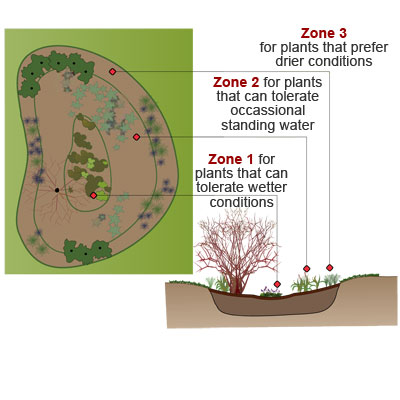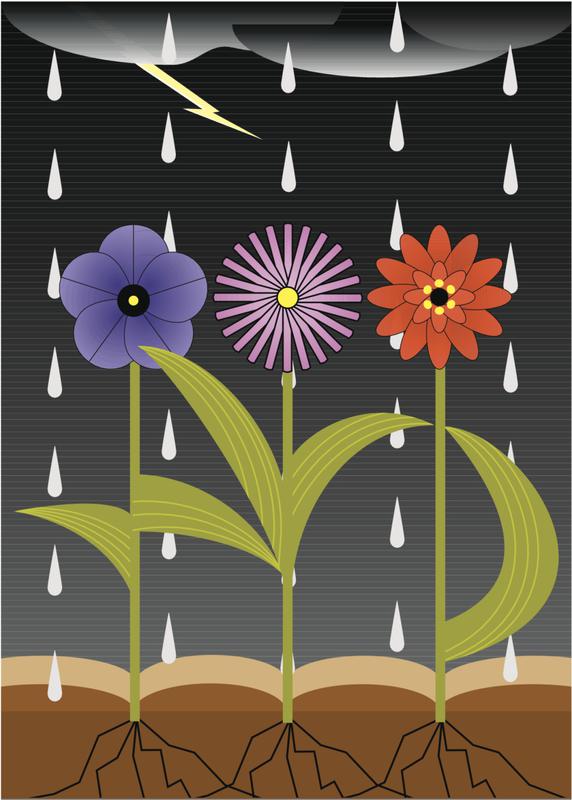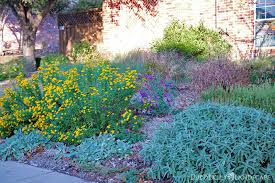Selena's Landscape, Design & Tree Service, LLC.
Call us today at 484-645-4707
| ||||||
| ||||||
| ||||||
| ||||||
| ||||||
| ||||||
| ||||||
| ||||||
| ||||||
| ||||||
| ||||||
|
A rain garden is a garden which takes advantage of rainfall and stormwater runoff in its design and plant selection. Usually, it is a small garden which is designed to withstand the extremes of moisture and concentrations of nutrients, particularly Nitrogen and Phosphorus, that are found in stormwater runoff. rain gardens are sited ideally close to the source of the runoff and serve to slow the stormwater as it travels downhill, giving the stormwater more time to infiltrate and less opportunity to gain momentum and erosive power.
On the surface, a rain garden looks like an attractive garden. It may support habitat for birds and butterflies, it may be a formal landscape amenity or it may be incorporated into a larger garden as a border or as an entry feature. What makes it a rain garden is in how it gets its water and what happens to that water once it arrives in the garden.
Below the surface of the garden, a number of processes are occurring which mimic the hydrologic action of a healthy forest. Soils are engineered and appropriate plants selected for the rain garden. The garden is a small bioretention cell in which stormwater is cleaned and reduced in volume once it enters the rain garden. Nitrogen and phosphorus levels and overall sediment loads in the stormwater are reduced by the action of the plants and growing media on the water. Multiple rain gardens over an area will have a positive cumulative effect on both the volume and quality of stormwater run off.
There are two basic types of rain gardens – under-drained and self-contained. Both types of rain gardens are used to improve stormwater quality, reduce runoff volumes and generally facilitate infiltration of cleaned water. Which type of garden is selected to be built is a balance of volumes of water to be treated, existing soil conditions, available space, and budget for the project.
In some cases where infiltration is not desired, the underdrain system can move excess water into a conventional storm sewer pipe system. Cases where infiltration would not be desirable would be if the bottom of the garden has less than 4’ of clearance to the seasonal mean high water table or if the adjacent soils are contaminated and the cleaned water from the garden would become recontaminated by coming in contact with the adjacent native solids.
Rain gardens are designed to be drained within four hours after a 1” rain event. Under-drained rain gardens typically are designed to drain within 2 hours of the design storm event. This is achieved through the use of highly porous planting media and underdrains which carry the cleaned rainwater away from the garden. As a result, the plants selected for the bioretention cell need to be able to withstand both the extremes of flooding and drought. Plants on the upper edges of the garden are often xeric in their cultural requirement descriptions with plants lower in the garden being more adapted to floodplain conditions. Many riparian edge species are particularly well suited to the extreme environments of rain gardens.
Rain gardens with no underdrain typically hold moisture longer, particularly in the lower areas of the garden. Plants selected for this garden should be able to tolerate inundation for a more extended period of time. However, as in the case of the underdrained rain garden, the surface is drained within four hours, although the soil may be saturated. As in the bioretention cell, soils are amended with a very porous planting media, minimally to a depth of 8” and ideally to a depth of 2’- 3’. The lower the amount of soil amendment added when the garden is built, the more necessary it is to have plants adapted to prolonged periods of wetness. As with the underdrained rain garden, the plants on the upper edges of the garden will need to be more xeric in their cultural requirements than the plants in the lower areas.
In both types of gardens, the ground is excavated and the planting media is imported to the site. The imported planting media should be clean and weed seed free. A liner may or may not be used, depending on the local conditions.
In both the under-drained and self-contained rain gardens, the success of the garden is greater when you start with healthy and smaller, rather than larger, plants. Some plants listed are successful in rain gardens only when they are installed small and have a chance to adapt to the conditions as they grow.
Plants with deep fibrous roots tend to have a competitive advantage in a rain garden and provide the most cleaning and filtration benefits to the environment. Typical rain gardens are populated with natives or native cultivars because those are most well adapted to a locality, but other ornamental horticultural plants that are non-invasive but able to grow in the garden conditions can also be excellent choices.
Most of the examples of rain gardens that are available to review are populated with either herbaceous perennials, woody shrubs or trees. This does not mean that annuals are not a possible choice for such gardens; rather it means that the gardens constructed have been designed for habitat and low maintenance goals rather than purely seasonal aesthetics and color effects. Some annuals are good candidates for a higher maintenance version of a rain garden.
What is a Rain Garden
Rain Gardens
During a downpour at a typical house in many municipalities, water gushes out of downspouts, across lawns treated with pesticides and fertilizers, into an oily street, and, finally, down a storm drain that dumps that pollution along with the water into a stream, river, or bay. By building a rain garden, you can divert your gutter water into an attractive planting bed that works like a sponge and natural filter to clean the water and let it percolate slowly into the surrounding soil. Installing a rain garden isn't difficult if you're willing to dig or you bring in machines to help.
Illustration: Washington State University Rain Garden Handbook for Western Washington Homeowners
Let Selena's Landscape, Design & Tree Service help you build your Rain Garden.
Let Selena's Landscape, Design & Tree Service help you build your Rain Garden.





